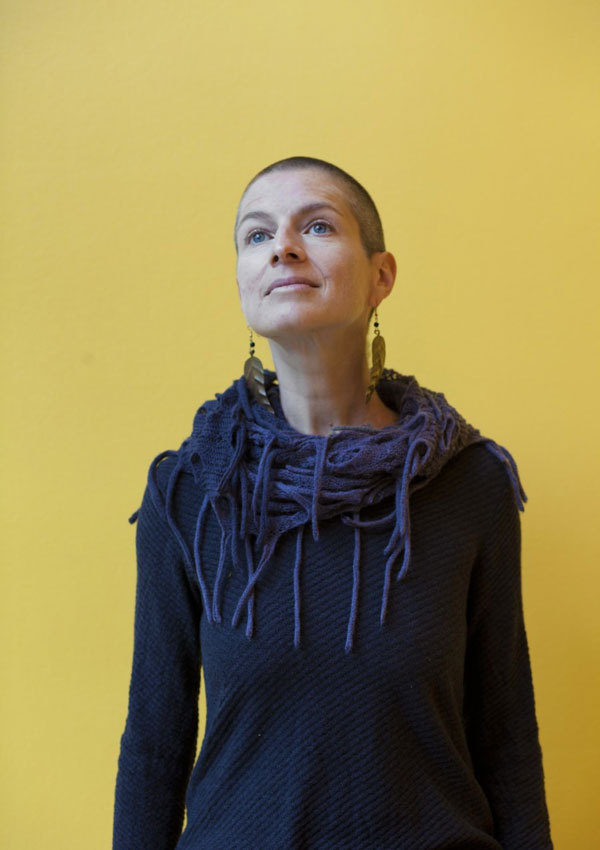On January 2, 2020, we published Anna Badkhen’s “‘Bright Unbearable Reality’: Migration As Seen from Above,” an essay about aerial photography. Badkhen tracks Western depictions of humanity from above, starting with the work of fifteenth-century Flemish Renaissance painter Joachim Patinir and followed by photographic images historically used to document war, mass migration, and now the effects of the global pandemic.
Born in the Soviet Union, Badkhen was a war correspondent for the San Francisco Chronicle when she moved from Moscow to the United States in her late twenties. She covered the US invasions of Afghanistan and Iraq, and wars in the Caucasus, the Middle East, and Africa. “By 2008, I became impatient with journalism,” she told me by email, “its formulae, its deadlines and general temporariness, its absurd concept of ethics stemming from its forced notion of impartiality. That distancing aspect of it particularly felt like dispossessing. I wanted to establish and maintain real relationships with the people on whose kindness, or mercy, my life often quite literally depended, especially in conflict zones.”
She has now written six books, with another on the way, set in a range of places, from the grasslands of Mali following nomadic herders’ annual migration to an Afghan village where a carpet is woven throughout four seasons. Her writing might be called literary nonfiction, or described as lyrical, though such generic definitions don’t fully account for the way in which Badkhen rejects the idea of the impartial observer. She describes her last three books as “magical nonfiction,” a term she feels makes room for curiosity while counteracting false notions of fact and distance.
In fact, in two of the three essays Badkhen has written for nybooks.com, she’s wrestled with complications of literal distance—specifically the bird’s-eye view. I wondered, beyond journalistic conventional wisdom, how she sees distance shaping and influencing the moral obligations of artists.
“Toni Morrison said about belonging and dispossession and the notion of home: ‘We are dreaming all wrong.’ I think of writing as a kind of dreaming that shrinks distance. I want to dream, to write, against distance,” she said, going on to reference another literary giant. “Art exists to bridge a gap. Derek Walcott writes: ‘there are two journeys/in every odyssey, one on worried water,/the other crouched and motionless, without noise.’ This is an apt description of what I want writing to do.”
In many ways, the attempt to write against distance has been in reaction to the borders and divisions that, from an early age, influenced Badkhen’s imagination. “I grew up behind the Iron Curtain and was, for more than a dozen years, a war correspondent: boundaries define very much the ways I experience the world,” she said.
Her most recent book, Fisherman’s Blues (2018), is set in a West African fishing community. “To understand more about how boundaries shape us,” she told me, “I decided to apprentice with artisanal fishermen because they have been crossing, generationally, what I had thought was the utmost boundary, between the terra firma and the ineffable. The chronicle of the lives of my crewmates, my mentors and friends, is the worried-water part of the story; the undercurrent, the stiller journey, is an introspection about our own boundaries, an inquiry into what we can learn about ourselves by learning about one another.”
I wondered if she’d always been a writer, even before her war correspondent days. “A badkhen is essentially a Jewish griot: storytelling is in the blood, at least on my paternal side. Additionally, both my mother and her mother were linguists; I imagine that I owe to them a curiosity about what language can do.
“But growing up in Leningrad, I wanted to be a book illustrator,” she said, “and I studied art for several years, in a very intense Soviet fashion. (My last three published books have my drawings: I did become a book illustrator, after all.)”
The pandemic caught Badkhen in the Horn of Africa—and, in fact, while negotiating whether she’d make a flight out in April, she contributed a dispatch to our pandemic journal from Ethiopia—where she was researching human movement out of Eden (160,000 years ago and today)—for her next book, An Anatomy of Lostness. She describes it as “an examination of human connectedness at a time defined by loss and migration. An editor called it ‘a guide to all the things we lose and attempt to preserve in transit: memories, lovers and relatives, folktales, cardinal directions, Eden and other paradises.’
“When we talk about the human condition today,” she continued, “the conversation about migration is unavoidable, both because one in seven humans on Earth is on the move, and because in every foundational myth that I know, the exile or exodus from a version of Eden is centerstage. Loss and migration are the foremost human context. What are the narratives that have gotten humanity through the last hundred and sixty thousand years to where we are now?
Advertisement
“Despite the immense amount of violence and loss I have witnessed, an infinitesimal fraction of the violence and loss we are experiencing globally, I remain interested in the miracle of survival, in what keeps us going.”


